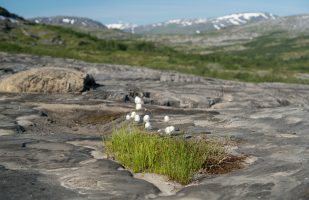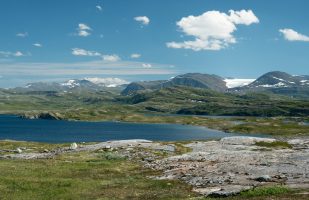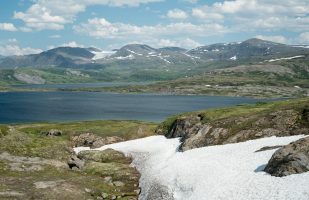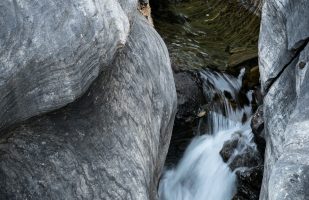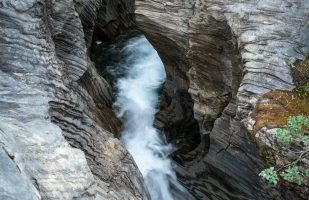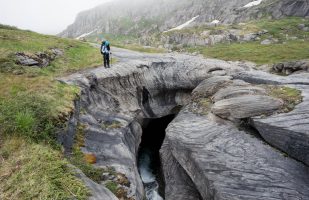The village of Glomfjord can be reached by regular bus from Bodø, the capital of the Nordland province. From Glomfjord the main road passes a tunnel for about 2 km until Fykan, the planned starting point of our hike. Due to the traffic the tunnel is dangerous to cross on foot. Fortunately, a kind driver stopped and took us through the tunnel and even further to the trailhead at the east end of the lake Fykanvatnet. We arrived there in the late afternoon.
The Ascent
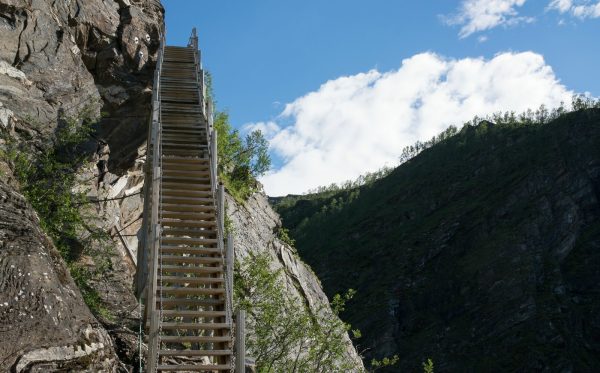
From there it’s a very steep ascent to the next lake Nedre Navarvatnet. The steepest sections can be overcome via the historic Fykantrappa, a wooden staircase built into the cliff walls.
As we ascend we get good views back to the fjord and towards Fykanvatnet. Both, Fykanvatnet and Nedre Navarvatnet, are part of a hydroelectric scheme. However, compared to other reservoirs the water levels are relatively stable, and thus the lakeshore is in a state that seems “almost natural”.
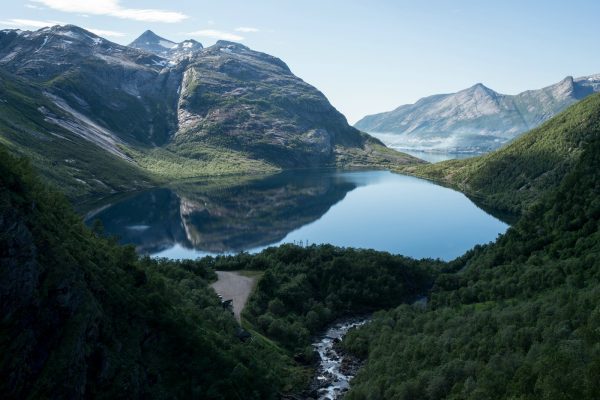
At Nedre Navarvatnet we found a small peninsula that was perfect as a campsite and we stopped for the day.
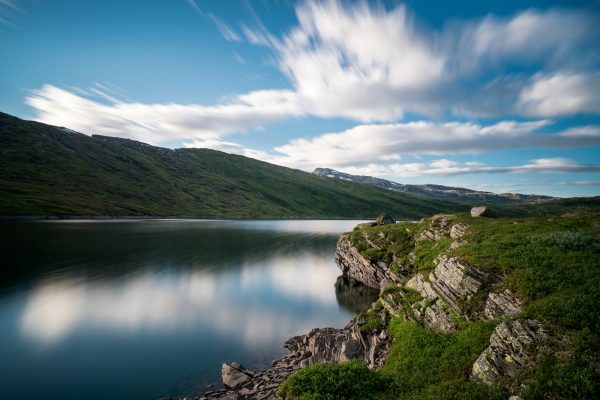
Into Láhko National Park
The next two days we used to explore the small Láhko National Park which has very interesting Karst formations. Water has eroded the limestone rock, leaving crevices, canyons, tunnels and other interesting rock features.
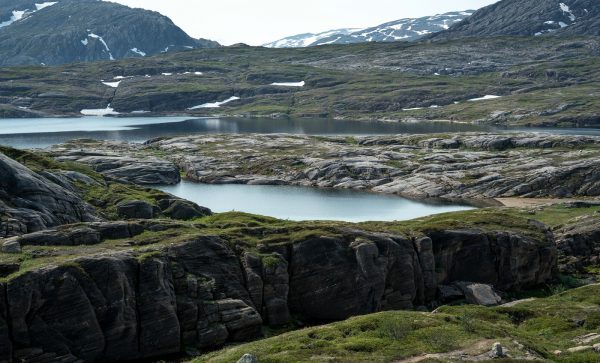
We followed the marked trail north via Stendalen and then back south. The sky was empty of clouds and it was very warm. We stopped early when we found a nice location and used the warm weather for a bath in the nearby river. As it seems, also some mosquitoes enjoyed the weather…
At sunset (at about 11:30 pm) I took a few images – finally with some clouds! The following image shows a long exposure of the scene.
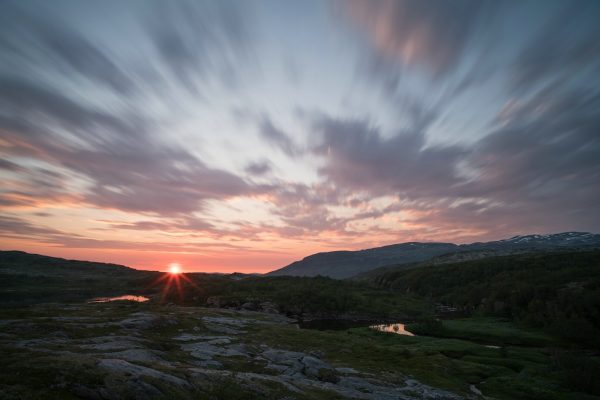
In the early morning the sun woke us up as it heated up the tent significantly. Breakfast and getting ready still took a lot of time at this early stage of the trip.
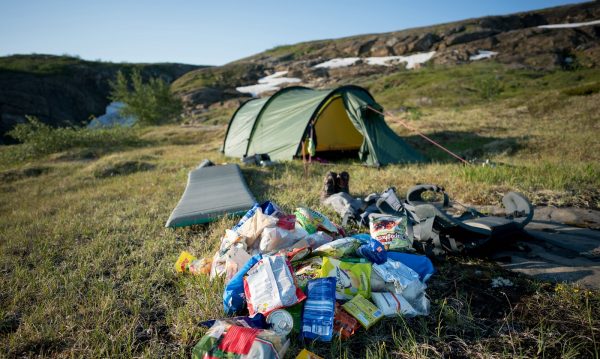
Also this day was going to be warm and cloudless – at least until the afternoon. It was unusually dry this year, and many small streams had dried up. When we passed a small waterfall we stopped to enjoy the scene and cool down.
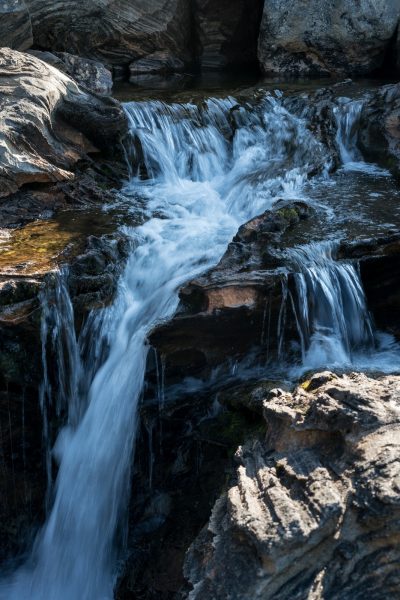
The stream was flowing mostly underground and came to the surface just above the small waterfall.
Throughout the day we had nice views towards the lakes Sundvatnet and Fishvatnet as well as the glacier Simlebreen.
Corbels Canyon
We stopped near Corbels Canyon where the stream Svalvasselva has cut a canyon in the limestone that features natural bridges and tunnels. This area proved to be really interesting and we spent quite some time exploring it. The weather had deteriorated by now.
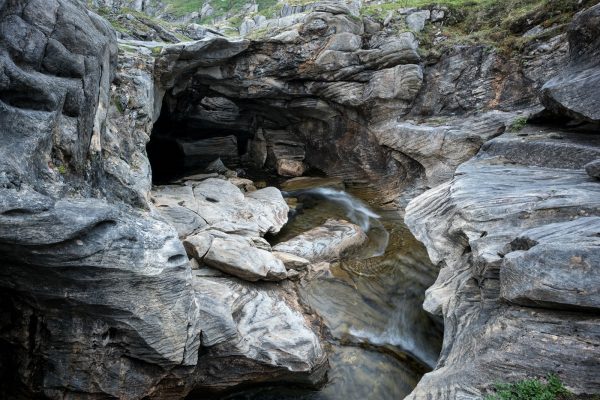
The canyon proved to be a difficult photographic subject. Getting a good vantage point was difficult and scrambling to a ledge (like in the image above) was not always possible.
The next day turned out to be rainy and foggy and thus we remained in our tent until the early afternoon. We considered to stay put, but in the end decided to walk a few kilometers in spite of the weather.
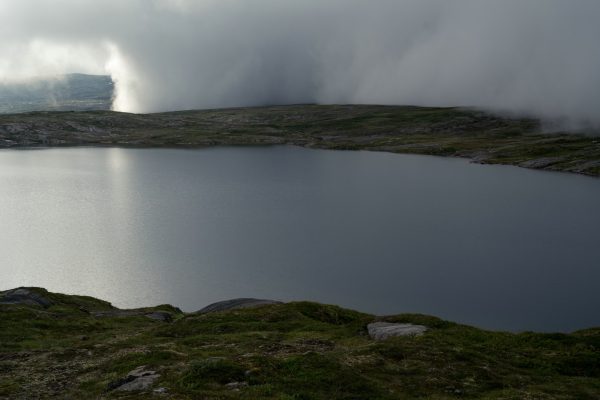
Near Litle Storglomvatnet, the northeast part of the large lake Storglomvatnet we set up camp again.
